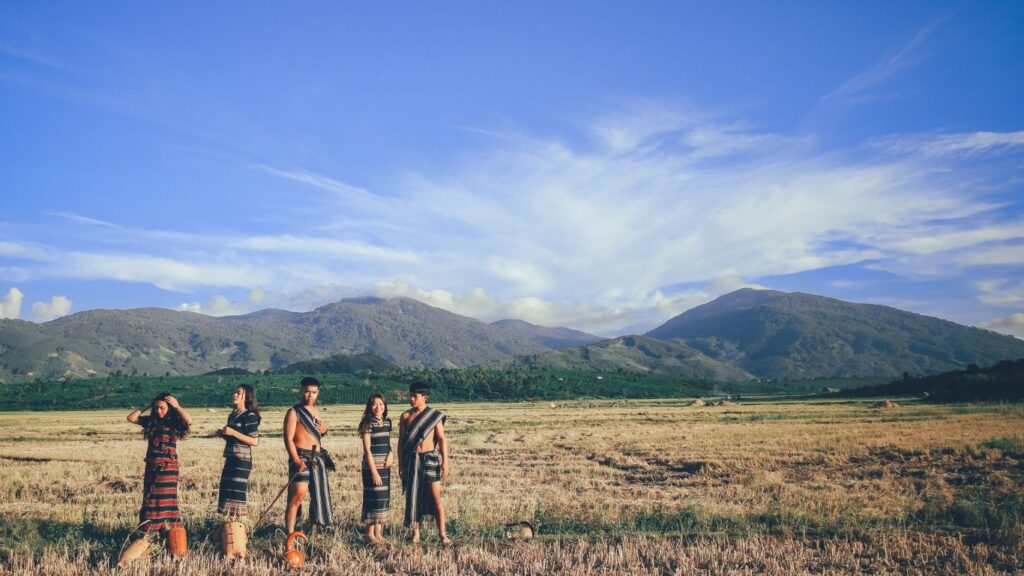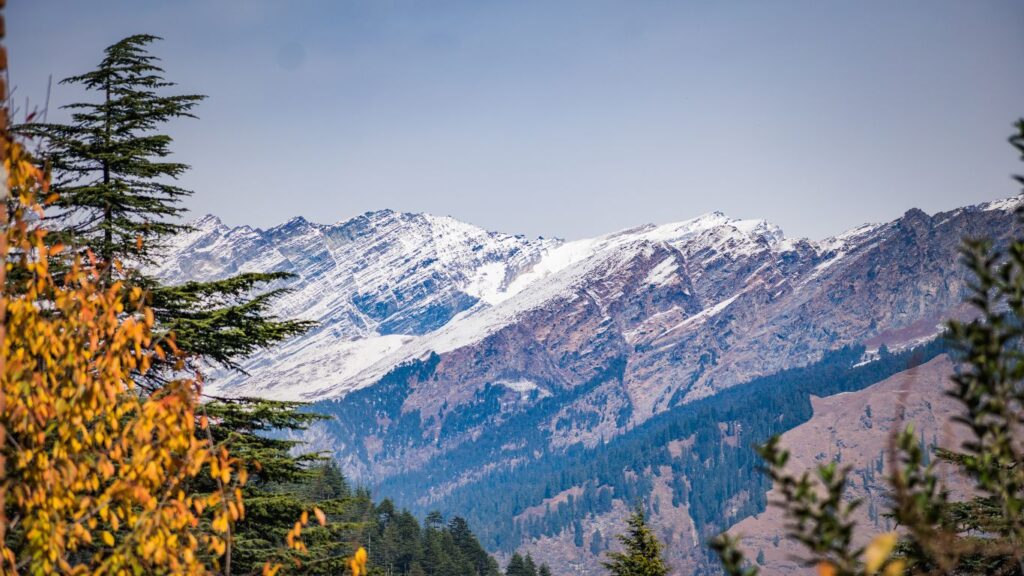In the embrace of towering peaks and vast, open skies, mountain living beckons with an allure that is as profound as it is serene. This lifestyle, marked by its perceived simplicity and an unparalleled connection to nature, offers more than just scenic beauty; it embodies a profound harmony with the environment. The essence of mountain living is not just in surviving the elements but thriving in them, where the rhythms of nature dictate the pace of daily life. This blog embarks on a journey to unearth the less-known wellness practices of mountain communities—practices that are integral to their remarkable health, longevity, and happiness. In today’s fast-paced, technology-driven world, there’s a growing need to reconnect with these traditional wisdoms. Through exploring the symbiotic relationship between mountain people and their environment, we aim to uncover valuable lessons that can inspire and guide us toward a more balanced and healthy lifestyle.
The Hidden Gems of Mountain Living: Discovering the Wellness Practices of Mountain People
The Essence of Mountain Living
Nestled amidst the towering peaks and verdant valleys, life in mountainous regions unfolds in a tapestry of breathtaking landscapes and tranquil serenity. Here, the environment is not just a backdrop but a vital participant in daily life, shaping routines, traditions, and a sense of community that is markedly different from the hustle and bustle of urban living. The crisp, clean air and the sprawling vistas of untouched nature encourage a deep connection with the environment, a bond that is both nurturing and humbling.
The challenging terrain and remote locations of these areas necessitate a lifestyle that inherently integrates physical activity—be it through farming on steep slopes, trekking long distances for daily chores, or simply navigating the rugged paths that connect homes and communities. This constant engagement with nature not only fortifies the body but also the spirit, fostering resilience, independence, and a profound appreciation for the simplicity of life.
Close-knit communities thrive on mutual support and shared experiences, where traditions and wisdom are passed down through generations. The remoteness, rather than isolating, cultivates strong bonds and a collective identity centered around cooperation and a shared respect for the land. These unique lifestyle choices, born out of necessity and the environment, contribute significantly to the well-being of mountain dwellers, offering lessons in living well that are increasingly relevant in our fast-paced, technology-driven world.
Wellness Practices of Mountain People
Natural Diet and Nutrition
In the heart of mountainous regions, the diet is a reflection of the harmonious relationship between the people and their pristine environment. Locally-sourced, organic foods form the cornerstone of their nutrition, including an array of wild herbs that dot the landscape, fresh vegetables from terraced gardens, and free-range livestock raised on the verdant hillsides. These communities rely on traditional cooking methods passed down through generations, which not only preserve the robust flavors but also ensure the maximum retention of nutrients. Steaming, slow-cooking in earthenware pots, and fermenting are common practices, enhancing the food’s health benefits and ensuring that every meal supports a lifestyle of wellness and vitality.
Physical Activity Integrated into Daily Life

The rugged and undulating terrain of mountain regions naturally integrates physical activity into the daily lives of its inhabitants. The steep slopes and varied landscapes necessitate walking and hiking as part of routine travel, turning simple commutes into cardiovascular workouts. Farming, too, is physically demanding work, as terraced fields require manual labor to plant, tend, and harvest crops. This constant engagement with the land not only fosters a deep connection to nature but also significantly contributes to physical fitness. The regular, vigorous exercise strengthens the heart, improves endurance, and maintains overall health, illustrating how the mountainous environment acts as a natural promoter of physical well-being.
Herbal Remedies and Natural Medicine
Mountain communities possess a rich heritage of herbal medicine, a treasure trove of knowledge passed down through generations. This wisdom is deeply rooted in the understanding and respect for the local flora. The inhabitants identify, harvest, and utilize a variety of plants and herbs that grow in their rugged terrain, applying them to treat common ailments ranging from colds and digestive issues to inflammation and skin conditions. This reliance on nature’s pharmacy not only underscores a sustainable approach to health but also highlights the effectiveness of combining ancient practices with the natural healing properties of herbs, offering powerful remedies that have been honed over centuries.
Mindfulness and Spiritual Practices
Mindfulness, meditation, and spiritual rituals play a pivotal role in the lives of mountain communities, serving as vital components in maintaining mental health and fostering a strong sense of unity. These practices offer a path to inner peace, allowing individuals to connect deeply with themselves and their surroundings. Meditation and mindfulness encourage a present-focused awareness and tranquility, effectively reducing stress and promoting emotional well-being. Spiritual rituals, often interwoven with the community’s cultural fabric, strengthen communal bonds, creating a shared identity and support system. Together, these practices cultivate a harmonious balance between mind, body, and community, reinforcing resilience and collective well-being.
Community and Social Support
A supportive community plays a crucial role in nurturing mental well-being, with communal activities and strong family ties at its heart. These social networks provide a sense of belonging and security, essential components for emotional health. Participating in communal activities, such as shared meals, festivals, and cooperative work, strengthens interpersonal connections and fosters a sense of collective identity and purpose. Strong family ties offer emotional support, understanding, and love, serving as a foundation for resilience in the face of life’s challenges. Together, these social structures create a nurturing environment that promotes mental well-being and a sense of shared humanity.
Lessons from the Mountains
Mountain wellness practices offer invaluable lessons for enhancing modern lifestyles. Prioritizing natural, locally-sourced foods enriches our diet with nutrients essential for health. Integrating physical activity into daily routines, through walking or cycling, improves physical fitness and cardiovascular health. Valuing natural remedies encourages a holistic approach to health care, using the healing powers of herbs and plants. Fostering community connections strengthens mental well-being by creating a supportive network of relationships. By incorporating these practices, we can cultivate a balanced and healthy lifestyle, drawing inspiration from the wisdom of mountain living to navigate the complexities of the modern world.

Implementing Mountain Wellness Practices into Urban Living
To embrace mountain living principles in any setting, consider urban gardening to connect with nature and grow your own herbs and vegetables, enhancing your diet with fresh, organic produce. Engage with your community through local events or volunteering, building strong relationships and support networks. Adopt natural eating habits by choosing whole, unprocessed foods and exploring farmers’ markets for local, seasonal produce. Incorporate regular physical activity into your routine by walking or cycling for short commutes, taking stairs, or participating in outdoor activities like hiking or park workouts. These steps can bring the essence of mountain wellness into your everyday life, fostering health and well-being.
Conclusion
In uncovering the hidden gems of mountain living, we’ve journeyed through the rich tapestry of wellness practices that define the lives of mountain people. From their deep connection to nature and reliance on natural foods, to the integration of physical activity into daily life, and the powerful bond of community, these practices offer a blueprint for a more balanced and healthy lifestyle. As we navigate the complexities of modern living, let these lessons inspire us to embrace simplicity, wellness, and community. By incorporating these age-old wisdoms into our lives, we too can harness the serenity and vitality found in the heart of the mountains.
Also read: The Power of Community: How Group Workouts Can Elevate Your Fitness Game
